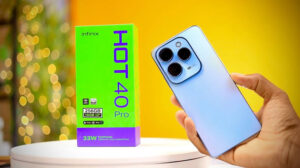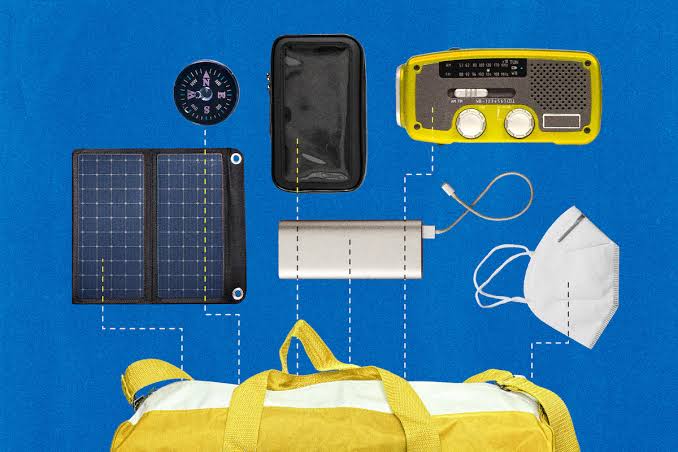High-Tech Smartphones: In a time when technology is advancing rapidly smartphones play a role, in our everyday routines. They serve as tools for communication but also as versatile gadgets that combine functionalities like photography, gaming, productivity and social networking.
Every new smartphone launch brings competition among manufacturers to surpass each other by introducing state of the art technology enhanced performance and creative designs. This article explores the process of unboxing and reviewing the newest smartphones showcasing their features performance benchmarks and overall user satisfaction.
Understanding the Latest High-Tech Smartphones
As we dive into the unboxing and review process, it’s essential to recognize what makes a smartphone “high-tech.” Typically, these devices come equipped with advanced features such as:
- High-Resolution Displays: Many new smartphones boast OLED or AMOLED displays with resolutions exceeding Full HD, providing vibrant colors and stunning clarity.
- Powerful Processors: Cutting-edge smartphones often feature the latest processors, which enhance speed and multitasking capabilities.
- Exceptional Camera Systems: The integration of multiple camera lenses and advanced photography software allows users to capture high-quality images in various conditions.
- 5G Connectivity: The latest models support 5G technology, enabling faster download and upload speeds.
- Innovative Features: Features such as in-display fingerprint sensors, facial recognition, and AI enhancements are becoming standard in new releases.
Unboxing the Latest Smartphones
Unboxing a new smartphone is an exciting experience that sets the tone for the user’s journey with the device. The unboxing process typically includes:
- Packaging Design: High-end smartphones often come in meticulously designed packaging that reflects the brand’s identity. The unboxing experience itself can feel luxurious, with quality materials and thoughtful layouts.
- Included Accessories: Upon opening the box, users can expect to find essential accessories, including a charger, USB cable, SIM card ejector tool, and sometimes even premium earbuds. Some brands are moving towards sustainability, opting for minimal packaging and omitting accessories like chargers to reduce electronic waste.
- Initial Setup: Once the device is powered on, the setup process usually guides users through configuring settings, transferring data from a previous device, and connecting to Wi-Fi. The initial setup experience can significantly influence a user’s perception of the smartphone.
Key Features to Review – High-Tech Smartphones
After the unboxing, it’s essential to delve into the key features of the smartphone, which play a critical role in the overall experience.
Display Quality
The display is one of the first things users notice. High-tech smartphones often feature:
- Resolution and Technology: Look for devices with high pixel densities, such as QHD or 4K resolutions. The transition to OLED technology provides deeper blacks and more vibrant colors, enhancing the visual experience.
- Refresh Rates: Many new smartphones come with high refresh rates (90Hz or 120Hz), resulting in smoother scrolling and improved responsiveness, particularly beneficial for gaming and media consumption.
Performance
The performance of a smartphone is determined by several factors, including the processor, RAM, and software optimization.
- Processor: High-end models often include the latest processors, such as Qualcomm’s Snapdragon series or Apple’s A-series chips. These processors significantly boost the device’s ability to handle demanding tasks like gaming and video editing.
- RAM: More RAM enables better multitasking capabilities. Reviewing devices with at least 8GB of RAM is advisable for smooth performance.
- Software Experience: The user interface and software optimization can impact performance. Brands often customize their operating systems (like Samsung’s One UI or Xiaomi’s MIUI), so it’s essential to consider how user-friendly and intuitive the experience is.
Camera Capabilities
The camera system is often a significant selling point for smartphones, with many users prioritizing photography features.
- Camera Specifications: A review should assess the number of lenses (wide-angle, telephoto, macro), aperture sizes, and sensor quality. Advanced features like night mode, portrait mode, and AI enhancements can elevate photography capabilities.
- Image Quality: Conduct real-world tests to evaluate image quality in various lighting conditions. Low-light performance, color accuracy, and detail retention are crucial factors to consider.
- Video Recording: Many smartphones now support 4K or even 8K video recording. Evaluating stabilization features, frame rates, and audio quality during recording is important for users interested in videography.
Battery Life and Charging
Battery performance is a critical aspect of any smartphone review.
- Capacity and Usage: Analyze the battery capacity (measured in mAh) and how it translates into real-world usage. High-capacity batteries typically provide longer usage times, but software optimization plays a significant role.
- Charging Options: Evaluate the charging speeds (both wired and wireless). Many high-tech smartphones support fast charging and wireless charging, which can significantly enhance the user experience.
Connectivity Features
As technology evolves, connectivity options become increasingly important.
- 5G Support: With the rollout of 5G networks, assessing how well a smartphone connects to these networks is essential for future-proofing.
- Wi-Fi and Bluetooth Capabilities: Look for the latest Wi-Fi standards (like Wi-Fi 6) and Bluetooth versions, which enhance connectivity and data transfer speeds.
Build Quality and Design
The physical design and build quality of a smartphone contribute significantly to user satisfaction.
- Materials: Premium smartphones often use materials like glass or aluminum, enhancing durability and aesthetics. Consider the weight and feel of the device in hand.
- Ergonomics: A smartphone’s size and shape can affect usability, particularly for one-handed operation. Assess how comfortable the device is for daily use.
User Experience and Software – High-Tech Smartphones
The overall user experience encompasses software usability, app ecosystem, and updates.
- User Interface: A well-designed user interface can significantly improve the smartphone experience. Consider how easy it is to navigate through menus and settings.
- App Availability: A robust app ecosystem is vital for maximizing a smartphone’s potential. Review the availability and quality of apps in the respective app stores.
- Software Updates: Regular software updates can enhance security and introduce new features. Consider the manufacturer’s track record for providing updates.
Conclusion: Making the Right Choice of High-Tech Smartphones
Unboxing and reviewing the latest high-tech smartphones provides valuable insights for potential buyers. As smartphones continue to evolve, understanding the benefits and drawbacks of each model becomes crucial for making an informed purchase decision.
When selecting a smartphone, users should prioritize their specific needs, whether that be exceptional camera capabilities, superior performance, or long-lasting battery life. By considering the features discussed in this article, consumers can navigate the crowded smartphone market with confidence, ultimately finding a device that complements their lifestyle and enhances their digital experience. As technology continues to advance, staying informed about the latest trends and innovations will ensure users get the most out of their smartphone investment.




Good
0kx8nj